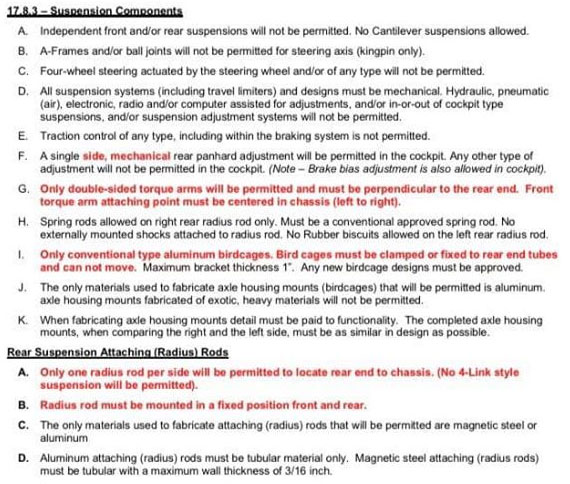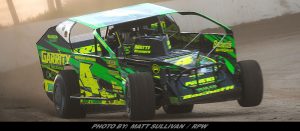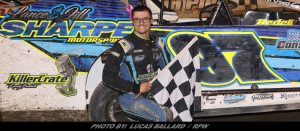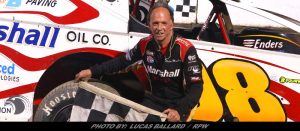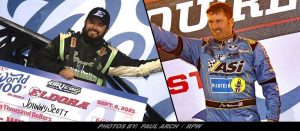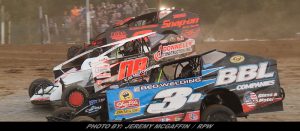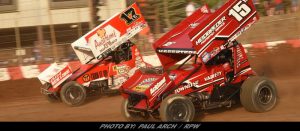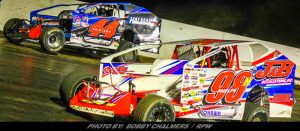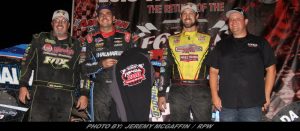RPW Column: The Battle To Build A Better Racecar; Reaction To DIRTcar’s 4-Link Rule
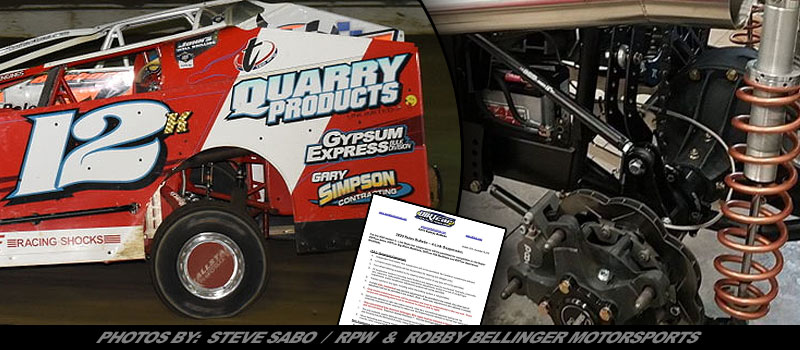
RPW Column By: BOBBY CHALMERS / RPW – NEW LEBANON, NY – A gigantic buzz was heard around the Dirt Modified world on Wednesday afternoon when DIRTcar officials released a rules bulletin, outlining their stance on four-link suspension geometry in their open wheel cars.
The design, made famous in the late 90’s and early 2000’s by a car driven by multi-time Lebanon Valley Speedway champion Kenny Tremont, was so successful in it’s day that the very car now sits in the Northeast Dirt Modified Hall of Fame.
Over the last dozen or so years, several teams have made their attempts to try and get the design to work, compared to what many currently use, with only marginal success. Most chassis builders have been working with either the industry-standard torsion bar design or, since late 2018, a rear coil and left-side panhard bar design.
That was, until the folks at Teo Pro Car began their own research and development.
“Last winter at the Performance Racing Industry trade show in Indianapolis, Ricky Elliott and I had begun the process of building a car with a four-link suspension,” Teo Pro Car’s Matt Hearn said. “The car had a different torque arm design and we put in a lot of hours to build something different.”
Could it work? Was the time worth it?
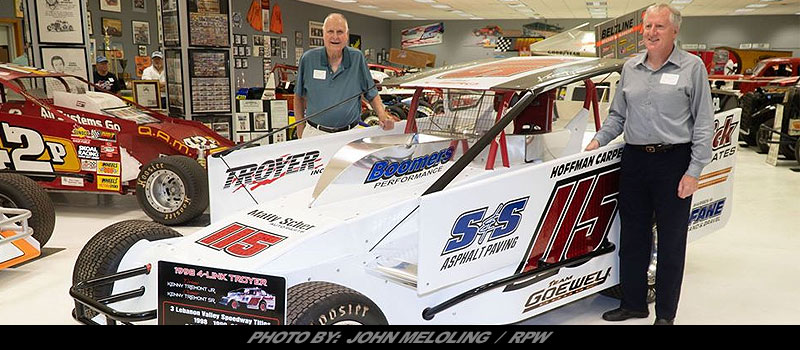 “We took a chance because we didn’t know how it would go,” he said. “Others have built four-links in recent years with not a lot of success. We finally finished it in May but didn’t get it on track until July when Ricky ran it down in Delaware.”
“We took a chance because we didn’t know how it would go,” he said. “Others have built four-links in recent years with not a lot of success. We finally finished it in May but didn’t get it on track until July when Ricky ran it down in Delaware.”
How did the car go?
“Ricky finished second with it,” he said. “Then, Larry Wight got in it at the end of the year and was a threat to win at Orange County and Georgetown. That’s when I think it definitely caught some attention.”
It definitely did. As stated, since late in 2018, many chassis builders and race teams have been working to make the rear coil over suspension set-up work. While this isn’t a new design either, several new additions to it have helped to make coils very popular, and successful, as of late.
However, the coil rear design doesn’t work on all tracks. That has led many teams to bring multiple cars to different races. There they can determine which to run, coil or torsion bar, based on track conditions.
Other teams that can only take one to the track have had spare parts ready to go so they could make the necessary adjustments to their suspensions as they saw fit.
The possibility of another successful rear suspension option, and even more added cost to teams, is the reason DIRTcar officials took the stand they did on Wednesday.
“We put the rear suspension rule into effect to help keep team from having another option that could potentially cost them more money,” DIRTcar Northeast Series Director Dean Reynolds said. “Four-link technology isn’t new and was tried with some success years ago. We understand that, but with the way things have been recently, with torsion bars and coils (in theory, which to run, etc), we feel throwing another option for a rear suspension in just adds to that.”
DIRTcar, in taking this stand, isn’t just looking at the top drivers in the headline class. They are looking at each open wheel division, and many teams who have substantially different budgets.
“As an organization, we not only have to look at Big Blocks,” he said. “We also have to keep the 358 Modifieds and Sportsman in mind as well. There’s nearly 1,000 cars out there and most of those teams simply can’t easily afford another change in suspensions to keep from falling behind.”
But how do you stop development? How do you keep teams from trying to get an advantage?
“We know that in today’s climate, four-links could end up being a suspension of choice,” he said. “That would then force change. Say it becomes the choice to use on just one type of track. That further complicates the puzzle. Ingenuity is a beautiful thing, especially in our sport. Having a rule holding that back is definitely tough to look at. We understand that, but ingenuity also comes at a price.”
While cost is an issue, to Matt Hearn, he feels putting a rule into effect such as this one could really hurt the sport long term. A rule such as this should have been discussed by several people, including series and chassis builders, so a clear consensus could have been made.
“This is a rule that could continue to divide rulebooks,” Hearn said. “We already have ten different engine combinations out there. Now, you might be able to run a car at this track but not another? This is something that should’ve been discussed with all representatives of our sport. From track owners and different series promoters to chassis manufacturers and top drivers. Everyone should have gotten together on this before the rule was released.”
Hearn understands what’s going on, but feels that the world of Dirt Modified racing was built on ingenuity and creativity.
“As a builder, I believe Modified racing should be Modified racing,” he said. “It’s always been about building a better car. Look at where we started and what it has evolved in to. It’s been a lot of thinkers, late at night, in their race shops. By trying to hold that back or taking away the ability to try and build something better, aren’t you taking away part of racing? Do we really want to race against the same car as the guy next to us?”
Reynolds and the officials at DIRTcar don’t really want that either, but have to keep their eye on the big picture.
“You have to look at what is a smart technology advancement versus something that could possibly hinder simple numbers,” Reynolds said. “This rule doesn’t stop anyone from racing. It just says that what you have now is all set to go to the track in 2020.”
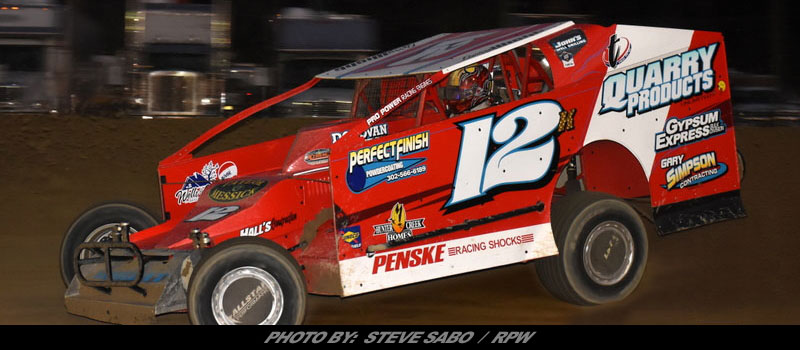 In the current state of Dirt Modified racing, it’s not about just DIRTcar. You also have to factor in the Short Track Super Series, open events and weekly tracks that may follow their own set of rules. Unfortunately, not everyone is reading from the same sheet of paper. Different tire rules…different engine rules…shock rules, etc. This is the part that rubs Hearn the wrong way.
In the current state of Dirt Modified racing, it’s not about just DIRTcar. You also have to factor in the Short Track Super Series, open events and weekly tracks that may follow their own set of rules. Unfortunately, not everyone is reading from the same sheet of paper. Different tire rules…different engine rules…shock rules, etc. This is the part that rubs Hearn the wrong way.
“Maybe we need to put our pride aside and decide what’s best for the sport as a whole,” Hearn said. “That’s the real way to save racers money. Make it so they can go to every track or series with the same car and same engine. If we could run all of the series and tracks with two cars and motors then the money to update your suspension wouldn’t be that bad.”
Coming Friday in RPW, part two of my conversation with Matt Hearn. In part two, we discuss where teams possibly go from here after the rules announcement and where he sees Dirt Modified racing heading in the future.


